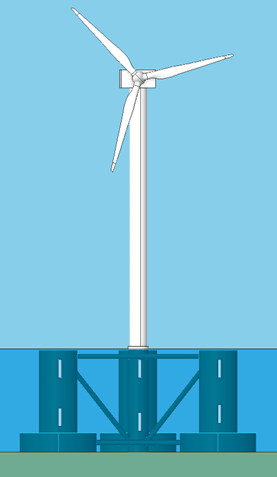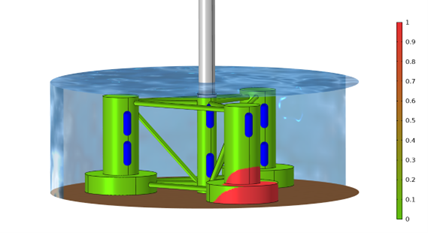Optimizing Subsea Cathodic Protection
This case study by Richard Chippendale explores how Element Digital Engineering applied advanced digital modelling to optimise subsea cathodic protection systems. Using Finite Element Analysis and customer-geometry CAD files, the team identified under-protected areas, guided optimal anode placement, and extended asset life via cost-effective solutions.
Limitations of Conventional Corrosion Management
Traditional corrosion management methods include Impressed Current Cathodic Protection (ICCP) and Sacrificial Anode Cathodic Protection (SACP). For both methods, published guidelines are commonly used in designing protection systems.
Take, for example, the DNV-RP-401 Cathodic Protection Standard, which is used for predicting the number of sacrificial anodes. This method calculates the required anode mass by considering the different surface areas of a subsea asset. However, this lumped approach does not provide information on the optimal installation locations for anodes to ensure uniform protection, a factor that is especially crucial for large, complex structures.
Furthermore, there is also an issue of over-conservatism due to the standard's constant current density demand for metallic surfaces. This approach does not take into account the electrochemical reaction kinetics that occur.

Representation of submerged equipment
Our Strategy for Subsea Cathodic Protection
We have deployed advanced digital modeling tools, such as Finite Element Analysis (FEA), to meticulously examine submerged structures. This approach yields specific data points on:
- Levels and uniformity of protection.
- Identification of asset parts that could be under-protected.
- Estimated lifespan of the subsea cathodic protection system.
Workflow of Digital Modeling
To ensure our numerical predictions are as representative as possible, it's crucial to use the as-designed geometry, often sourced from client-provided CAD files. Our extensive experience in handling CAD geometries enables us to swiftly de-feature these files. This process retains the key aspects while removing irrelevant items, simplifying the numerical analysis.
Once the CAD files are prepared, we can commence the cathodic protection simulations. These may be conducted using internationally recognized coating factors and current densities, or by incorporating more representative reaction kinetics, such as Tafel slopes.
However, information for Tafel slopes isn't always readily available in literature for specific materials and coatings. At Element, we can also conduct polarization studies in a variety of local environments. The data gathered from these experiments can then be integrated into our FEA studies for more accurate results.
It's also important to note the strong temperature dependence of corrosion rates. Hence, having accurate surface temperature data around the asset is vital for precise predictions. Element Digital Engineering has performed numerous thermal fluid studies on subsea oil and gas assets. The temperature data from these studies are invaluable for conducting temperature-dependent cathodic protection studies.

Default placement of sacrificial anode on a subsea structure

Positive Outcomes of the Element Digital Engineering Solution
Our comprehensive approach has provided our customers with significant benefits:
- Detailed insights into the efficacy of their existing anode configuration.
- Guidelines for optimal anode placement.
- Comparative analysis of protection under various operating conditions throughout different life phases.
- Enhanced subsea cathodic protection strategies, informed by both DNV standards and Tafel slope measurements.
These improvements have extended the operational life of their submerged structures in substantial cost savings in maintenance.

Adequate protected surface: A 0 denotes sufficient protection and 1 denotes under-protection.

